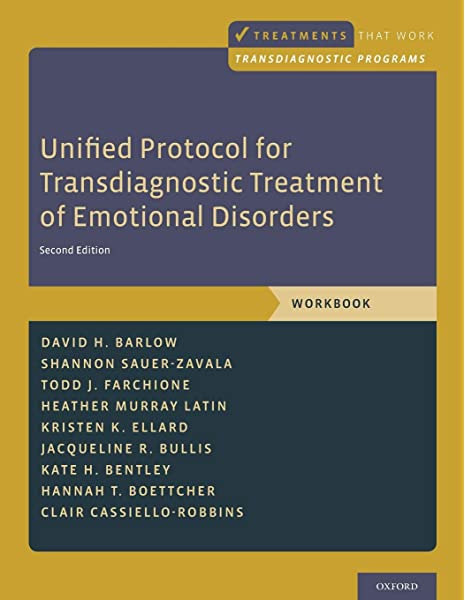A while ago a professor at my university said that a good health professional is one who knows how the different techniques evaluated are applied empirically and knew how to combine them for the treatment of each individual, that is, he said that we must be like alchemists: look for the perfect combination for each patient, that is what transdiagnostic therapy does.
Thanks to him, when I became a psychologist, I was very clear about the idea that it was more effective to work with the origin of the psychological problem than to put out the fires, in this way, when we treat only the most superficial, We will only get short-term and ephemeral improvements, while if we manage to work the cause it is more likely that therapeutic success will be maintained and that relapses will be avoided , that’s the line that follows transdiagnostic therapy.
What’s that about?
We are becoming increasingly aware that it is very common to suffer from a certain type of emotional disorder, in fact, mental disorders are the most common diseases in the population, in this way we all know someone who suffers from or has suffered from anxiety and depression. Problems can even be something that happens to us, so we know how the situation can interfere in our lives and the degree of discomfort it creates.
That is why we are also increasingly aware of the need to find a good psychologist to regain our well-being. The truth is, when we’re looking for a therapist, everyone follows the reasoning. Not everyone follows that line of valuation and personalized treatment that my teacher told me so long ago. Some adhere to the diagnostic label and initiate standard treatment, which already exists and has been stipulated specifically for each disorder.
Let me explain: for each psychological pathology, there are specific treatment programs already developed, standards that indicate that if you have a disorder it is the work that needs to be done with you, they are techniques determined in a certain order. The problem with this is that even if people share the same diagnosis, they may need to work on it in different ways.
This is not to say that we simply have to ignore the stipulations, of course we have to take into account the scientific literature, what it says and the best way to intervene in each psychological problem, but we must be aware that the person in front of us is different from the others.
Therefore, on the basis of these individual characteristics, we must make a unique combination of varied and scientifically approved techniques. That’s what my teacher was talking about.
Where does transdiagnostic therapy come from? As the word itself suggests, the question is to go beyond the diagnostic label itself, rather than starting a specific program previously stipulated, it is about working on the common aspects that are observed in all psychological disorders, that is, are we talking about these?causes? that are essential for long-term well-being.
Instead of working on the specific symptoms of each pathology, we should worry about the common factors that lead us to develop psychological problems, so emotional disorders are considered to share the same vulnerability that, when associated with psychosocial stressors, can lead to different factors. Specifically, this type of therapy places emotional regulation at the center of treatment.
Emotional regulation is the set of strategies we use to influence or modify the emotional experiences we live in, that is, these are the tools we can use to maintain, increase or suppress a certain emotional state. emotional disorders? Rumia, delight and avoidance.
People with emotional disorders use non-adaptive emotional regulation strategies and help maintain symptoms. Therefore, it is necessary to work and modify these strategies to recover psychological well-being, this, of course, without forgetting the basics that work in cognitive behavioral therapy.
This also works to reassess negative interpretations of situations and modify these inappropriate behaviors, so transdiagnostic therapy is responsible for making explicit the implicit cognitive and emotional processes that influence their discomfort in patients. how to modify them. Therefore, transdiagnostic therapy focuses on the treatment of emotions.
It aims to help patients learn to face and feel uncomfortable emotions, and respond to them in a gentle and adaptive way. The goal is to reduce the intensity and frequency of uncomfortable emotions.
However, the goal is not to eliminate such emotions, essential for life, but to put them in a functional context, so that they are adaptable, useful and help us manage our day to day in the best possible way.
Images courtesy of Nik Shuliahin, Annie Spratt and Radu Florin

